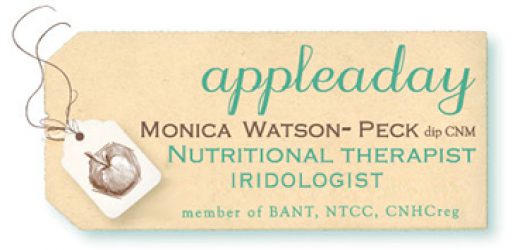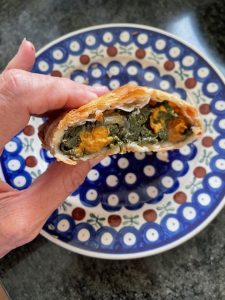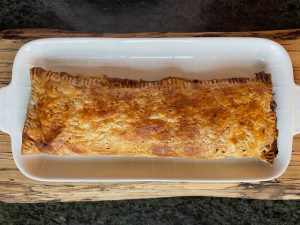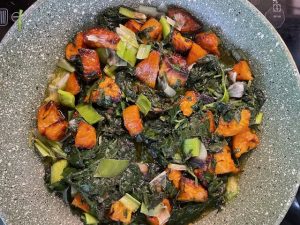When clients come for an initial consultation they often tell me they’re already taking an omega-3 supplement. Sometimes it’s on the advice of a physio for a painful knee, or a dermatologist for a skin complaint, an optometrist suggesting it may help protect against macular degeneration. Others have read an article, a book, or listened to a podcast explaining how certain omega-3 fatty acids might help heart or brain health, or their rheumatoid arthritis, or even increase life span.
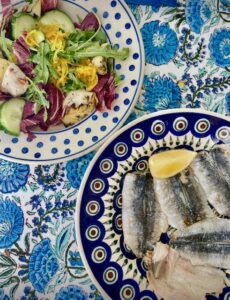
This is all to some degree true. Either there is evidence showing clear benefits, or at least promising possibilities. Certainly good reason for these fatty acids to be on everyone’s radar. If we understand what they are, and how they might support our health, we can make more informed choices about what we eat and whether or not supplementation is right for us.
So here’s a tour – shorter at least than a full-day seminar these fatty acids could easily warrant – focusing on two omega-3s which have held centre stage in the health world for several decades.
What’s in a name? Are omega-3s, fish oils, and EPA/DHA all the same?
Omega-3s are a family of fatty acids (= components of dietary fat). The name “omega-3” comes from their chemical structure, and not, as someone once suggested, because there are three fatty acids in this family.
These three key family members all have tongue-twister names, thankfully shortened to acronyms:
- ALA (alpha-linolenic acid): a plant-based omega-3 with excellent health benefits of its own (a topic for another time or else this blog will turn into a book).
- EPA (eicosapentaenoic acid) and DHA (docosahexaenoic acid): two marine-based omega-3s that will be the focus of this tour, owing to their wide-ranging health benefits and the extensive body of research surrounding them.
Where do EPA and DHA come from?
Unlike cholesterol, our bodies can’t make EPA and DHA, which is why they’re called ‘essential’ fatty acids because we have to get them from our diet – from fish.
All fish contain some EPA and DHA because they either eat microalgae – the original source of these fatty acids – or they eat smaller fish, which have eaten microalgae.
Good news for plant-based eaters since microalgae supplements are widely available, and more food products are now being fortified with algae-based EPA and DHA.
Back to fish! While most species contain some omega-3s, fatty fish are definitely the stars of the show. Cold-water fatty fish like salmon, mackerel, anchovy, sardine, and herring (SMASH, an easy acronym) store more fat, and therefore have more EPA and DHA than lean white fish. They need these fats for energy in cold waters and to keep their cell membranes supple. EPA and DHA have similar effects in the human body, helping our arteries stay flexible and making blood ‘thinner’ or less sticky. Both actions are part of their bigger heart-protective role.
Given this marine link, it’s easy to see why the names EPA and DHA are often used interchangeably with “fish oils,” but I’m going to nitpick here: fish oils contain EPA and DHA, but they also contain other nutrients such as vitamin D, vitamin A, and various minerals.
This is important when you’re supplementing. If it’s specifically these two anti-inflammatory fatty acids, EPA and DHA, that you’re after, do check the supplement label. A bottle may state “1000 mg fish oil”, but the ingredient list may show it only contains 200mg EPA and 120mg DHA. Or, as someone recently discovered, as little as 18mg and 25mg.
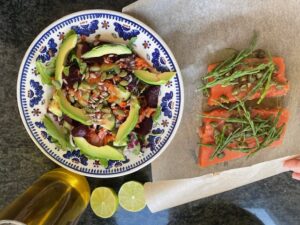
How much do we need?
General recommendation is around 1000 mg per day, although some sources suggest lower, around 450mg, and some clinical trials use much higher doses.
Acording to Dr Bill Harris in this Zoe interview an average serving of oily fish contains approx 1200 mg EPA & DHA, so, ideally, we should be eating some sort of oily fish around 4-5x weekly.
In the above podcast interview Dr Harris adds that DHA and EPA in supplement form can be in any ratio; a split like 600mg EPA to 300mg DHA is fine.
The reason for these varying ratios is due to research suggesting the two fatty acids have different qualities. DHA may be more supportive for brain health, whilst EPA may be beneficial for mental health and depression. EPA is also thought to have stronger anti-inflammatory effects and also might be better for heart health.
However, as a believer in the ‘whole being greater than the sum of its parts’, and given that fish and microalgae contain both these fatty acids, I usually like to recommend supplements with similar (ish) ratios.
The elephant in the room: contaminants
One concern with fish oil is heavy metal contamination. Mercury often gets the spotlight, but other heavy metals can accumulate too, depending on where fish live.
Large, long-living predatory fish at the top of the food chain tend to build up the highest levels (for example, tuna, swordfish, shark, king mackerel, and marlin), so, avoiding these will help reduce your toxic load.
Here are some useful links on safer fish choices (USA based):
US FDA: Advice about eating fish (PDF) Advice for pregnant women, but with a mercury section
And the NRDC fish guide
High-quality fish oil and microalgae supplements are normally screened for contaminants and companies will often detail their purification processes online. If not, you should be able to email them and ask if these processes are in place.
You may find IFOS (International Fish Oil Standards) certification on some labels, which means there has been third-party testing for contaminants.
A quick aside here: not all supplements are created equal. Price will often reflect quality, although, saying that, you don’t need to buy the most expensive omega-3 supplement on the market. There are good options that are more affordable. More important is to be wary of random “special offers” online unless you know the product and its quality control.
As for microplastics and BPA, they are a huge problem we’ve created in our plastic-riddled world.
I read that some supplement companies are using ultrafiltration techniques regarding the removal of micro plastics, but I believe this is more to do with the water where sustainably farmed fish live. I haven’t found reliable or consistent information about the guaranteed removal of BPA and micro plastics in fish oil supplements sourced from ocean fish.
If you have, please let me know!
Meanwhile, the best we can do is:
- Minimise new plastic purchases.
- Reuse and recycle where possible.
- Stick to the safer oily fish choices mentioned above.
- Choose supplement brands which are transparent about contaminant testing.
- And finally, support your body with a high-antioxidant diet, that rainbow-on-your-plate, which is at least 30 different plants, herbs, and spices a week.

Inflammation:
The first time I learned about EPA and DHA at college, it was concerning their anti inflammatory support.
Inflammation is a natural process: we get an infection or we cut ourselves and subsequently have an acute inflammatory response that’s geared to clearing the pathogen, or making us want to remain immobile so we rest and heal. A temporary inflammatory response.
Chronic inflammation, however, is a prolonged even ongoing response, and it plays a role in many of today’s illnesses, whether it’s something as harmless as hay fever or as serious as heart disease, diabetes, cancer and neurodegenerative disorders.
There has been considerable research into the effectivement of omega-3s and auto-immune conditions like rheumatoid arthritis, IBD, psoriasis and asthma. Studies are promising but “still more research needed”. However, there are convincing results regarding rheumatoid arthritis, with omega-3 supplementation improving joint health and lessening morning stiffness, tenderness and pain.
Brain and eye health
About 60% of the brain is made of fat, with DHA forming a vital structural part. It’s therefore no surprise that omega-3s play a significant role in brain health during all phases of life, from pregnancy, where they may lower the risk of preterm birth, to foetal brain development, right through to old age and their potential to lower the risk of dementia.
Here is a link disussing maternal DHA status during pregnancy & its impact on infant neurodevelopment, Nutrients, NLM, 2020
And brain health researcher and neuroscientist, Louisa Nicola, discusses Alzheimer’s and omega-3 near the end of this fascinating podcast with Dr Chatterjee
Dr Bryce Appelbaum, a neuro-ophthalmologist in the US, notes that “good levels of omega-3s are associated with larger hippocampal volume”, which translates to “improved memory, learning, reasoning, and enhanced neural communication, with a lower risk of vascular dementia”.
Interestingly, studies also suggest omega-3s, especially EPA, may support mood disorders such as depression. The evidence is still mixed, hence ongoing research is needed, but consider how easy it would be to try increasing your oily fish intake to the recommended amount, and see if it helps your depression!
Regarding eye health, many opthalmologists recommend omega-3 supplementation for numerous eye conditions. These range, a.o. from dry eyes and blurry vision to its possible benefits regarding glaucoma. Given that the retina, at the back of our eyes, has the highest amount of omega-3s in our body, it makes sense that EPA and DHA play a supportive role in the health of our eyes.
Longevity
“Biological age reversal” has become such a buzzword, with a lot of focus on intermittent fasting, resistance training, nasal breathing, cold water immersion to name but a few.
EPA and DHA appear almost every time there’s a longevity discussion, whether in research, books, or podcasts. This may be due to their anti-inflammatory role or heart and brain protection, or potential cancer-protective effects. In addition, some studies have shown that omega-3s may play a role in the biology of our telomeres (the caps on our DNA), slowing cellular ageing, although results regarding this are inconsistent (which could be due, in part, to differing dosages and the types of supplements used, not to mention the exisiting variations in the participants’ diets).
If you’d like to learn more I’d recommend podcasts or interviews with some doctors considered experts in this field, such as Drs Peter Attia, Andrew Huberman, Steven Gundry, and Mohammed Enayat.
Heart health
Omega-3 supports the heart in many ways: making blood less sticky and reducing clot risk, keeping vessels supple and improving blood flow, stabilizing heart rhythm, lowering triglycerides.
In recent years some studies have raised questions. Results have been inconsistent or confusing, so more research is needed. A meta-analysis of a number of clinical trials suggest slight risk of atrial fibrillation among high-risk heart patients taking a very high dose supplementation (3–4g daily).
This Zoe podcast interview with Dr Bill Harris (founder of OmegaQuant omega-3 tests) gives a good summary of well-researched omega-3 benefits, some of which I’ve incorporated into this blog, as well as some interesting points he expresses relating to the above atrial fibrillation results.
Another link related to this AFib result is also here in this Omegamatters video.
In spite of inconsistencies to do with supplementation, dosages and effectiveness in some trials, when it comes to a heart-healthy diet it’s widely agreed upon that omega-3s from food, such as oily fish or microalgae fortified foods, are safe and very beneficial.
Gut support
Our microbiome influences so many aspects of our health, from our immune system to metabolic health and beyond, so it’s fascinating to read that omega-3s can exert positive changes in our gut.
This abstract discusses how a diet providing 600 mg omega-3 daily boosted production of butyrate, a beneficial short-chain fatty acid with well documented anti-inflammatory effects. (PubMed abstract)
The afore-mentioned benefits of omega-3s to mental health may not simply be about levels of DHA and EPA in our brain and nervous system, but also the beneficial changes these fatty acids bring about in our microbiome. Another example of the gut-brain axis at work!
Other health benefits
Research is on-going in so many other areas of health, from reducing the risk of cancers to potentially supporting bone health or helping reduce the severity of headaches to name but a few.
- Here an article regarding breast cancer based on the DO-HEALTH trial of over 2000 older people, showing omega-3s’ potential in lowering the risk of breast cancer. “Vitamin D, omega-3s and exercise may reduce cancer risk in older people” Breastcancer.org, 2022
- And “The influence of PUFAs (polyunsaturated fatty acids) on the deveopment of skin cancers, Diagnostics, NLM, 2021
- And this publication from the Medical Journal of Oncology, looking at the “Benefits of a high omega 3 and low omega 6 diet over a year in reducing a biomarker for prostate cancer progression and metastasis…”; ASCO publications, Medical journal of Oncology 2024
- Despite observational studies suggesting benefits of omega-3s regarding osteoporosis, clinical trials show mixed results. Nonetheless, this paper makes for an interesting read indicating how a higher omega-3 intake was inversely associated with osteoporosis risk, Frontiers in Nutrition, NLM 2025.
- And here, a video clip on headaches by Dr Huberman, discussing how omega-3s may help “multiple types of headaches” and reduce their frequency and intensity. Dr Huberman has many links to omega-3 benefits if you want to do one of his omega-3 tours!
Testing your levels
NHS doesn’t offer omega-3 testing, and medical professionals will probably give you a blank look if you ask to be tested.
There is a home kit test available in UK, The OmegaQuant Index test, founded by Dr Bill Harris (and no, I have no affiliations!) It’s an easy finger-prick test available to order online, which measures red blood cell levels of EPA and DHA.
The recommended test result is 8% or higher, however average levels are often very poor, closer to 3–5%. As processed food intake has increased, the consumption of fish appears to have declined.
We are all unique, and will absorb and utilise nutrients differently. If a group of us took the same daily dose of omega-3s, our blood levels would likely vary. For this reason it’s useful to have a base line so you know YOUR levels so you can then decide whether you need to increase SMASH fish, or add a supplement or simply continue with your current diet.
Rounding off the tour
This was never meant to be an omega-3 world tour, so I’ll stop now.
There is no magic bullet to better health, no single pill or one food. However, with all the comprehensive research and promising outcomes in so many different areas of health, I hope this tour has highlighted how these two omega-3s are worth having in your life.
References
- NIH: Omega-3 Fatty Acids Information Sheet
- Frontiers in Nutrition (2025): Insight into the effects of omega-3 fatty acids on gut microbiota
- ScienceDirect (2016–2024): Omega-3s in neuroprotection and inflammation
- BMJ Medicine (2024): Regular use of fish oil supplements and cardiovascular outcomes
- NED Nutrition Evidence Database (2020): Effect of Omega-3 on cardiovascular outcomes
- UK Biobank (2025): Fish oil supplementation and atrial fibrillation risk
- Nature (2025): Omega-3s and biological ageing
- MyVisionFirst.com: Which supplements to take for vision
- American Heart Association Journals (2023): Are you getting enough omega-3s?
- Huberman Lab resources
- Healthspan (2024): Omega-3 benefits for heart, brain, and eye health
- British Heart Foundation (2024): Omega-3 foods and your heart
- Zoe Podcast (2025): Omega-3s and brain health
- The Longevity Paradox, Dr Steven Gundry
